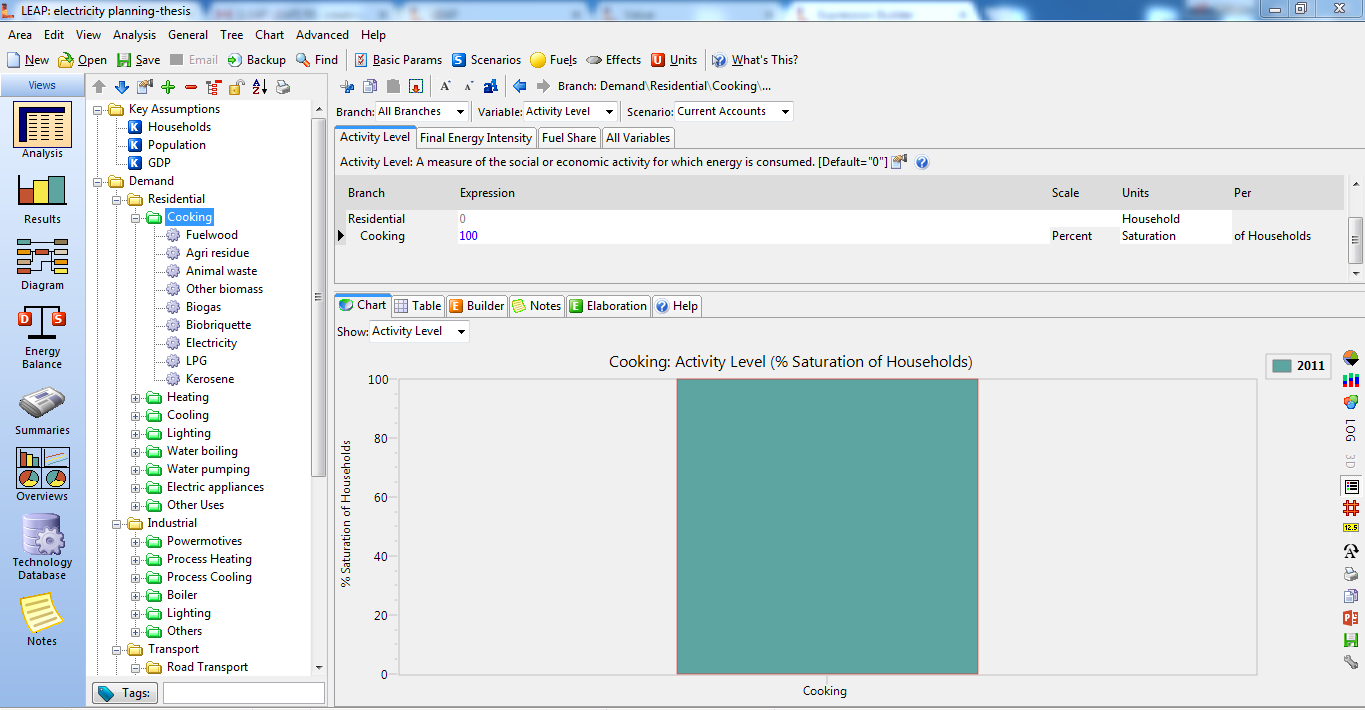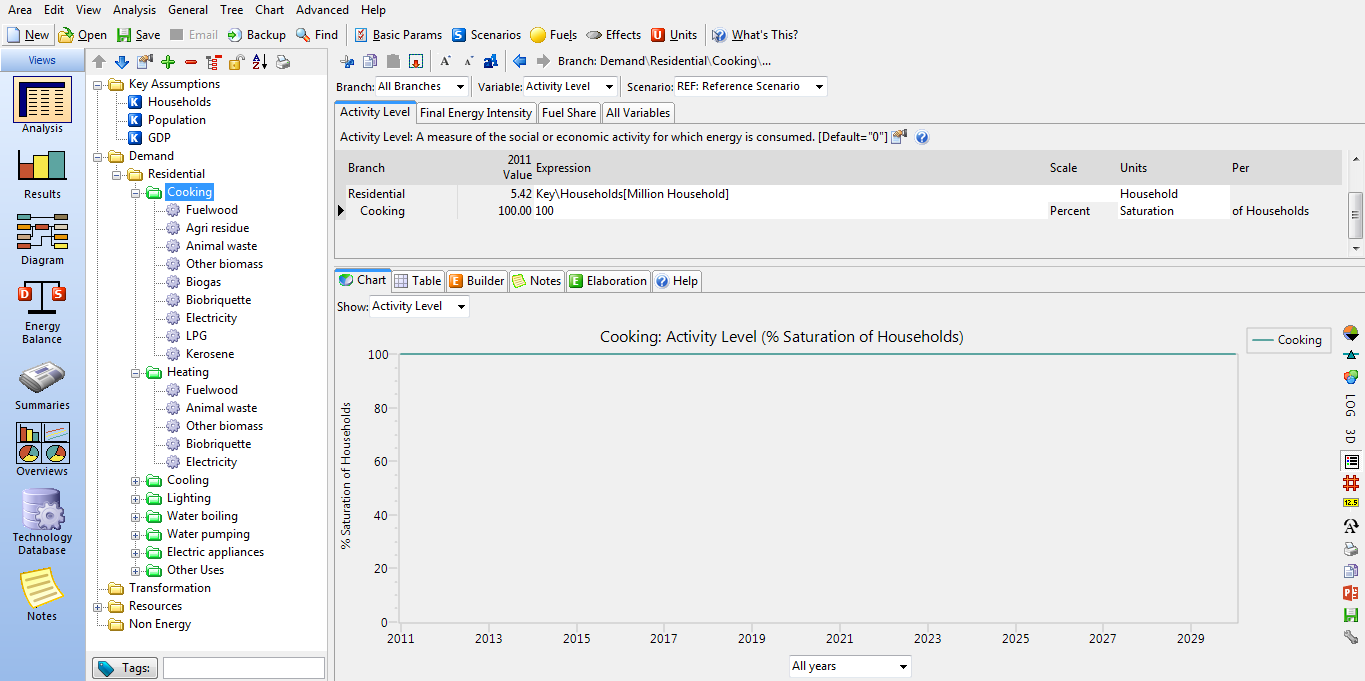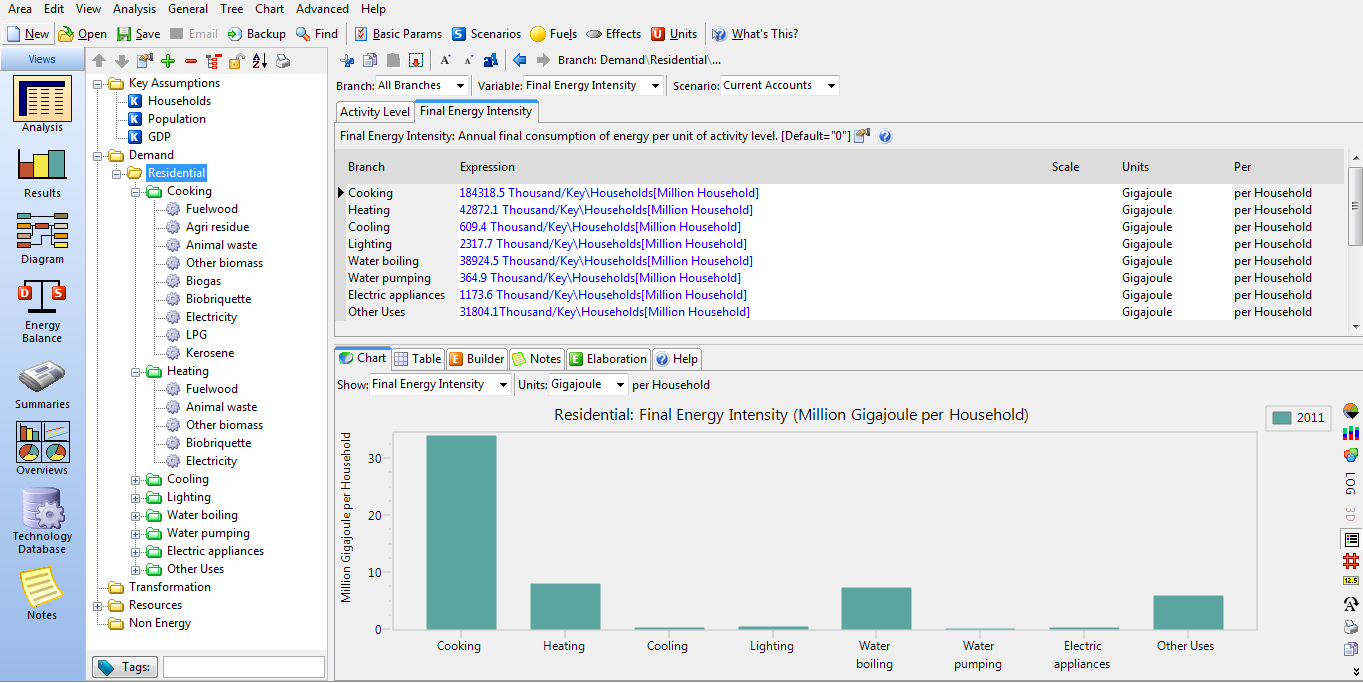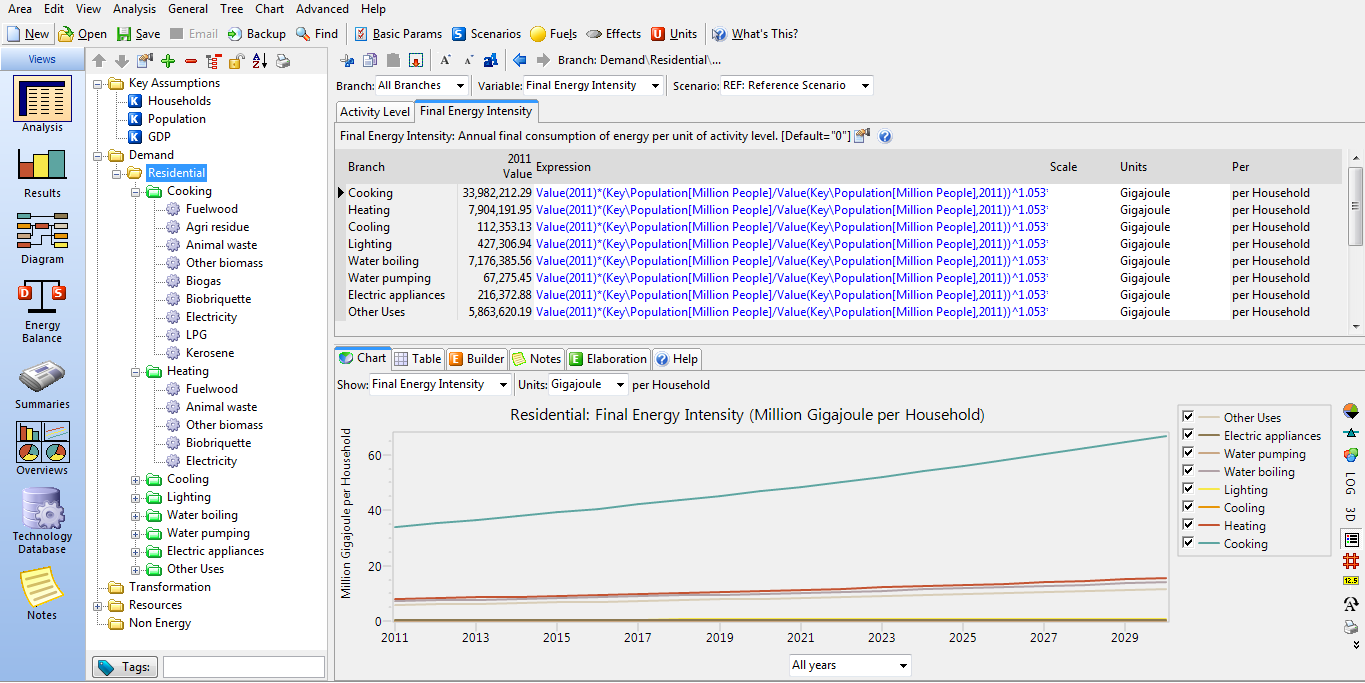Topic: creating reference scenario Subscribe | Previous | Next
Dear all,
I have input all the energy demand data for the base year. Now, I would like to model the energy demand in reference scenario with following equation.
ESDi, t
= (POPt/ POP0) α1i x (GDPt/ GDP0) α2i
x ESDi0Where,
ESDi, t = level of service
demand type i in year t for a sectorPOPt = population in year t
GDPt = aggregate GDP in year t
á1i = population elasticity of service demand type i
á2i = GDP elasticity of demand for service type i
Calibri;mso-fareast-theme-font:minor-latin;mso-hansi-theme-font:minor-latin;
mso-bidi-font-family:Mangal;mso-bidi-theme-font:minor-bidi;mso-ansi-language:
EN-US;mso-fareast-language:EN-US;mso-bidi-language:AR-SA">How can i do this?
Looking for your help.
1 Like Hi Pritam,
Hi Taylor,
Hi Pritam,
Hi
Taylor,mso-fareast-font-family:"Times New Roman";mso-bidi-language:NE">
The equation is for the
residential sector end use demand. As per your suggestion I have enter the
expression and attached the screenshot of it. Similarly for other sectoral end
use demand I need to input the following equations.
ESDi;t = (GDPt/GDP0)a2i *ESDi;0 (for transport sector end
use demand)
ESDi;t = (VAt/VA0)a3i *ESDi;0 ( for other sector end use demand)
Where, ESDi;t = level of service demand
type i in year t for a sector
GDPt = aggregate GDP in year t
VAt = value added in the
relevant sector in year t
a1i = population
elasticity of service demand type i
a2i = GDP elasticity of
demand for service type i
a3i = sectoral value
added elasticity of demand for service type i
Can I enter these
equations the same way I did for residential sector.
Looking for your help.
Regards,
Pritam
Dear Pritam,
Calibri;mso-fareast-theme-font:minor-latin;mso-hansi-theme-font:minor-latin;
mso-bidi-font-family:"Times New Roman";mso-bidi-theme-font:minor-bidi;
mso-ansi-language:EN-US;mso-fareast-language:EN-US;mso-bidi-language:AR-SA">Good afternoon!
Look, I'm a beginner of the LEAP, but when trying to insert the first formulas key Assumptions have not succeeded. So, I'm using your help, if possible of course, help me! I thank the attention and accept my compliments!
Mário Fernandes Biague
Hi Mario,
Respected Sir, I am Bishal from Central Department of Environmental Science,TU and I am also planning to use LEAP model in my thesis. I am very much hopeful that you could help me for my research so i will be more than happy if i could get your email address or contact Number so that i can communicate more with you.








